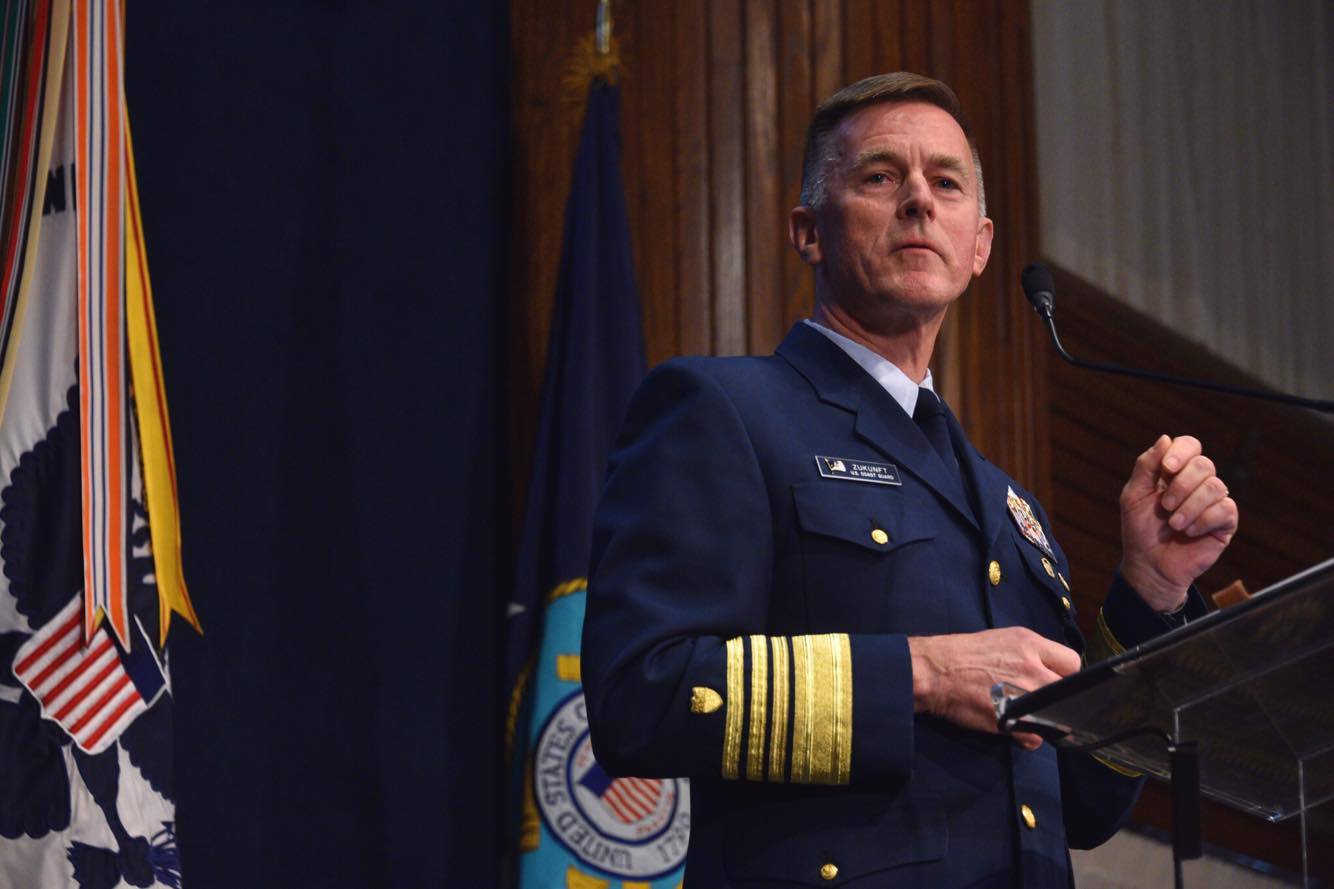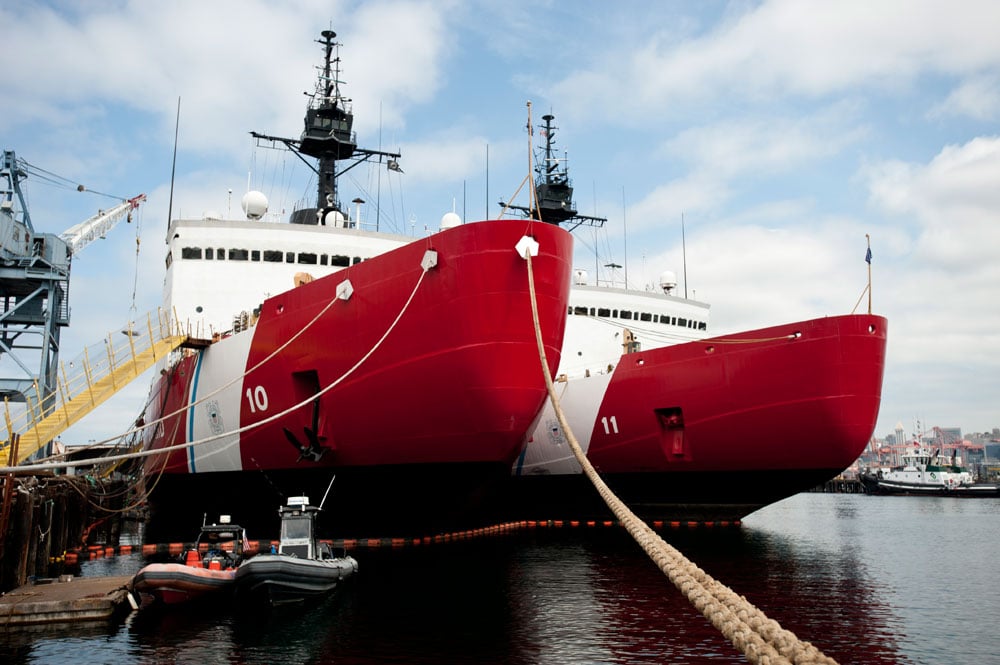
NATIONAL HARBOR, Md. – The Coast Guard commandant said he would join the other military branches to make a public case for funding his service beyond congressionally imposed spending caps.
Adm. Paul Zukunft, speaking Monday at the Navy League’s Sea Air Space 2017 symposium, said the service needs “to be more offensive,” in advocating for its budget.
“I can’t say I’m delighted being under [sequestration],” he said.
Unlike the other service, which had some congressional relief for the budget caps, “we get left behind” and that has a direct effect on the Coast Guard’s operations and maintenance accounts, which pay for training and modernization.
Complicating matters is the government is again operating under a continuing resolution rather than an approved budget for fiscal year 2017. Under the resolution, departments and agencies are not allowed to launch new programs even though they had been approved an unsigned budget act.
Current spending levels for the service are about $11 billion. The pre-decisional papers on spending for the Coast Guard called for $1.3 billion cut. He said the effect of news accounts on the potential cuts directly affected morale.
Zukunft said the service’s modernization program is proceeding now on schedule and budget. The question for the future is “can we sustain” it.
He pointed out the new National Security class cutters “pay for themselves on their maiden voyage,” in terms of drug interdictions.
A newer and long-range priority is now replacing the Coast Guard’s inland waterways vessels. The 35 vessels are on the average more than 50 years old.
Adm. Charles Michel, speaking Friday at the Military Reporters and Editors conference, said he believes buying the new vessel “fits comfortably into infrastructure” planning being done by the Trump administration. In addition to being newer, these vessels would be ”all of the same class,” the vice commandant said.
The oldest of these ships still operating date to World War II.
Zukunft said the inland waterways generate $4.5 trillion for the United States economy.

Looking at the polar regions, he said, “we need to build back the capacity” in heavy and medium ice breakers. Right now, the United States has one heavy, Polar Star, one medium, Healy. Coast Guard plans call for three new heavy ice breakers and two new medium ice breakers to join Healy.
Zukunft and Michel said there is about $1 billion in the Navy’s shipbuilding budget to replace Polar Star. A similar budget and building process were used for Healy. Delivery of the heavy ice breaker is scheduled for 2023.
The economic stakes in the Arctic are high and growing with so much potential oil and natural gas reserves off the United States’ extended continental shelf, Zukunft added. The Chinese, not an Arctic border nation, are beginning mineral exploration in the region.
While the Arctic remains demilitarized for now, Russia is building two corvettes capable of icebreaking operations.
Michel said the Coast Guard if “extremely concerned” about cruise ships in the Northwest Passage even when they are accompanied by ice-capable vessels.
“We need to pay attention to this part of the world.”
Michel put it this way: “If you can’t access an area, you can’t exercise your sovereignty.”
In the Western Hemisphere off the Central and South American coasts, “the demand signal is pretty high” for American Coast Guard presence, Zukunft said. He added the presidents of Colombia, Peru, Honduras and Costa Rica have said, “we need more U.S. Coast Guard off our coasts” to provide a “sea shield” to interdict drug smugglers and prosecute them to allow economic development.
Michel said cocaine production is up 238 percent in Colombia for a number of reasons, including the government’s decision to end its eradication program. Zukunft said 90 percent of that 700 metric tons of drugs Is headed to the United States after it first lands in Honduras, El Salvador or Guatemala for distribution.
Zukunft said Honduras’ level of violence from the drug trade several years ago was greater than Iraq’s in 2005, but has dropped dramatically in the last year because of better interdiction.
“This is very much an away game,” and the Coast Guard is looking to sea-based and land-based unmanned aerial systems to provide better intelligence on drug operations.
“We don’t have enough surveillance,” Zukunft said. The unmanned aerial systems the Coast Guard are “sensors only” and “not using Hellfire missiles to take out a go-fast” boat.





